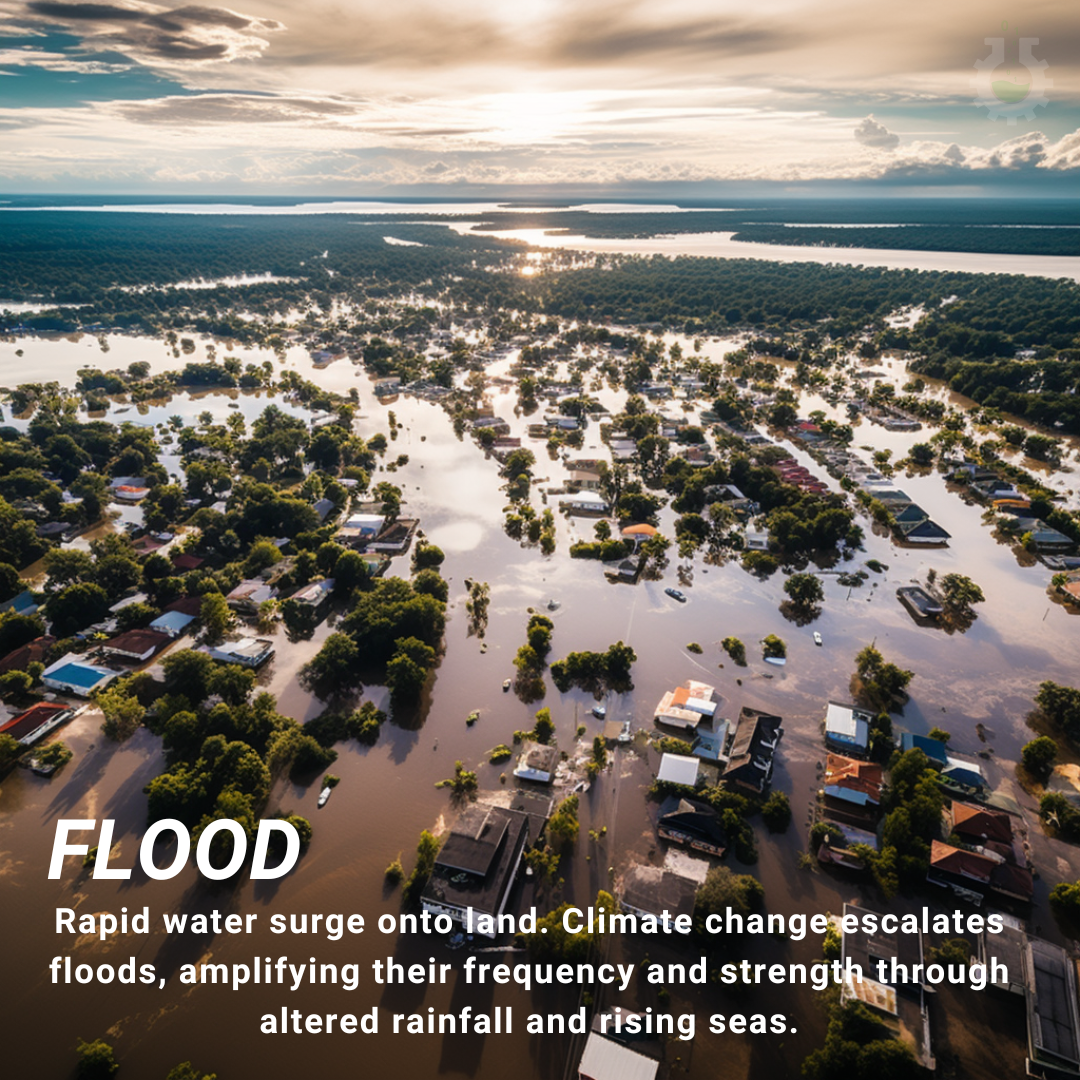August 11, 2023
Climate Change Poster Collection of the Day – Flood
Book a Demo
Today’s Climate Change Poster Collection highlights Flood, a natural disaster that manifests itself when water overflows or inundates land that’s typically dry. This occurs in various forms, each with its unique characteristics and potential impacts.
Flash floods are a particular type of flood that are known for their sudden onset. They are characterized by their great volume and short duration, often resulting from heavy rainfall or dam/levee failures. The intensity and speed at which these floods occur can be devastating, sweeping away everything in their path within a brief time.
Unlike flash floods, downstream floods have a different nature. They are more gradual, covering a broader area, and lasting for more extended periods. Such floods are typically seen in larger river systems and can affect vast regions, causing widespread damage.
The damage inflicted by flooding can be severe. It often leads to the destruction of homes and infrastructure, causing significant disruption to livelihoods. In the worst scenarios, floods can also result in the tragic loss of life.
Despite their negative impacts, floods can also have positive effects. They can replenish nutrients in floodplain areas, which is beneficial to agriculture. Floods are also essential for maintaining biodiversity in wetlands, which rely on the regular influx of water to sustain their unique ecosystems.
River floods, another type of flood, occur when the river’s flow rate surpasses the capacity of its channel. This is especially common at bends or meanders in the river, where water is naturally channeled towards the outer edge of the bend, increasing the likelihood of overflow. Damage to homes and businesses often occurs if they are situated within the natural flood plains of rivers, making these areas particularly vulnerable to flooding.
The likelihood of flooding can increase due to various factors. Heavy rainfall, rapid snowmelt, unusually high tides, tsunamis, and dam/levee failures can all contribute to an increased risk of flooding. Additionally, human-induced causes such as climate change and deforestation can exacerbate these natural risks, making floods more frequent and more destructive.
While floods are a natural and sometimes beneficial part of our environment, their potential for destruction demands our attention and respect. Understanding the nature of floods and the factors that contribute to them is crucial in managing their impacts and safeguarding our communities.
Discover an inspiring collection of climate change posters.



